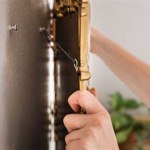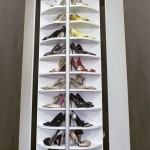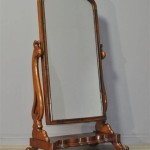How to Convert Plain Glass Into a Mirror
Turning ordinary glass into a reflective surface, a mirror, is a process that involves applying a thin layer of a highly reflective material. This material, typically silver or aluminum, is deposited onto the glass surface using a specialized technique. The process, while seemingly simple, requires precision and control to achieve a high-quality mirror finish.
Understanding the Process
The conversion of plain glass into a mirror involves a series of steps. The first step is to prepare the glass surface by cleaning it thoroughly to remove any dirt, grease, or other contaminants. This ensures that the reflective coating adheres properly. Next, the prepared glass is placed in a vacuum chamber. Within this chamber, the reflective material is deposited onto the glass surface. This deposition process utilizes various techniques, including sputtering, evaporation, and chemical deposition.
The choice of deposition method depends on the desired reflective properties and the type of mirror being produced. Once the reflective layer is deposited, the glass is often coated with a protective layer to prevent oxidation and scratches. This final coating enhances the durability of the mirror and helps maintain its reflective properties over time.
Key Components and Techniques
The process of converting plain glass into a mirror relies on a few key components and techniques. Let's delve deeper into these essential elements:
1. Reflective Material
The most common reflective material used in mirror production is silver. Silver possesses excellent reflectivity, making it highly effective for creating a clear mirror image. However, silver is susceptible to oxidation, which tarnishes its reflective properties. To mitigate this, a protective layer is applied over the silver coating.
Aluminum is an alternative reflective material used in mirror production. While not quite as reflective as silver, aluminum is more resistant to oxidation and offers a cost-effective solution. Aluminum mirrors are often used in applications where durability and affordability are prioritized.
2. Deposition Techniques
The deposition of the reflective material onto the glass surface is crucial to the mirror production process. Several techniques are commonly employed, each with its own advantages and disadvantages:
Sputtering: This technique involves bombarding a target material, usually silver or aluminum, with ions. This process releases atoms from the target material, which then deposit onto the glass surface. Sputtering is a highly versatile technique, allowing for precise control over the thickness and uniformity of the reflective layer.
Evaporation: In this method, the reflective material is heated to a high temperature in a vacuum chamber. The heat causes the material to vaporize, and the vaporized atoms then deposit onto the glass surface. Evaporation is a relatively simple and cost-effective technique but offers less control over the thickness and uniformity of the reflective layer compared to sputtering.
3. Protective Coating
After the reflective layer is deposited, a protective coating is applied to enhance the mirror's durability and longevity. This coating protects the reflective layer from oxidation, scratches, and other environmental factors. Common protective coatings include copper, lacquer, or specialized polymer layers.
Conclusion
Converting plain glass into a mirror is a multi-step process that involves carefully selecting and applying a reflective material to the glass surface. This process requires precision and knowledge of the involved components and techniques to achieve a high-quality mirror finish.

How To Make A Mirror With Pictures Wikihow

How To Turn Ordinary Glass Into An Antique Mirror

How To Make A Mirror With Pictures Wikihow

How To Turn Ordinary Glass Into Looking Interior Frugalista

How To Make A Mirror With Pictures Wikihow

How To Turn Ordinary Glass Into Looking Interior Frugalista

Easy Ways To Make A One Sided Mirror With Pictures Wikihow

How To Turn Clear Glass Into A Mirror With Spray Paint 2 Methods Hunker

How To Turn Ordinary Glass Into An Antique Mirror

How To Quickly Turn Glass Mirror In 4 Steps Spray Paint Home Decor Ideas








